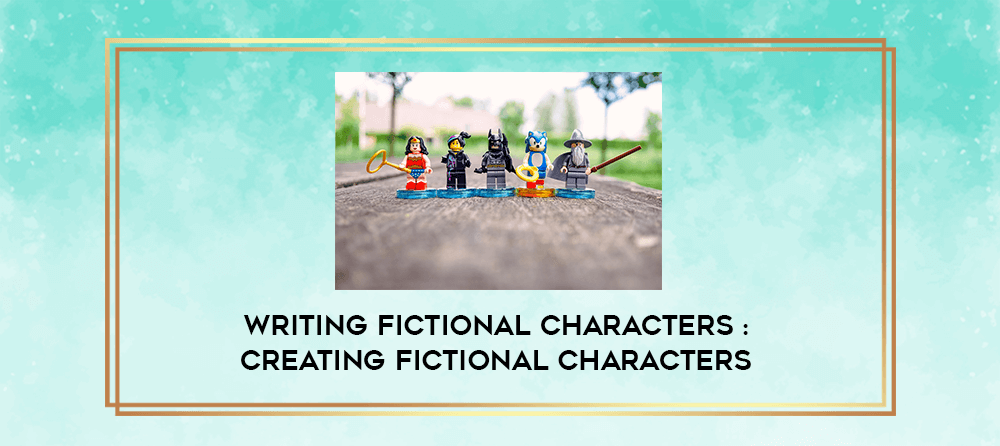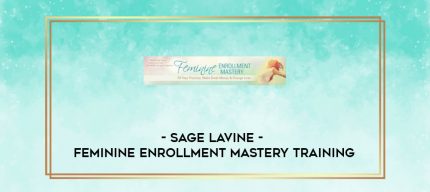Writing Fictional Characters : Creating Fictional Characters
Course Description
Archive : Writing Fictional Characters : Creating Fictional Characters Digital Download
Salepage : Writing Fictional Characters : Creating Fictional Characters
Delivery : Online With Any Device
Writing a legendary story is not easy. The premise has to be on point, the plot and subplots need to be seamlessly weaved in, and the cast of characters need to jump off the page as if the account is not of ink-and-paper creatures but of flesh-and-blood people and their real-life story.
In this article, we will discuss the last point – how to create legendary characters.
What You Will Learn in this Lesson
- The reason why you need to make your characters human, even if they are not.
- How to use universal archetypes to create a solid character framework.
- Archetypes vs. stereotypes, and why you need to focus on the former and steer away from the latter.
- The 16 male and female archetypes you can use to create a powerful protagonist.
- How to use a character web to form an unforgettable cast of characters.
Ready to learn? Let’s dive in.
The Reason Why Alien Characters End Up Alienating the Reader
Human beings are incredibly complex.
Why?
Because in the midst of all our universal similarities, we are all still very different. We are unique.
That’s what you are aiming for, if you want to write a memorable story.
The truth is: Regardless of the type of character, whether they are human, humanoid, or bestial, your cast of characters need to be -human if you want the readers to connect with them and be vested in their fictional lives.
That doesn’t mean you can’t imagine a race of beings who are utterly emotionless and base their actions on the greater good rather than the preciousness of individual lives. You will just need to draw from the life experience and thought process of human sociopaths to create such a race of beings. Anything less will just alienate your readers and reduce your characters to mere props in the story.
That’s why creating believable characters is so tough.
If you do not understand the nuances of being human, you will always fail to create a flesh-and-blood character whose emotions and choices make a story tick.
Fortunately, you don’t have to be a psychologist to be good at this gig. You just need to use universal archetypes.
How Archetypes Can Help You Create a Legendary Cast of Characters
Archetypes are ancient symbols that are universally known to every human culture, regardless of geographic location on this planet.
They are believed to be the original mold from which all subsequent generations were born.
Characters archetypes are, therefore, the mold from which all characters emerge.
For example, the Seductress is an archetype. So is the Hero. We know them immediately because they have studded stories and human lives since time immemorial. We may even know people who embody them in our own lives.
Archetypes create an instant recognition in the minds of the readers so they can seamlessly escape into the story world. But that’s not the only reason why you should use them.
Archetypes come ready-made with traits, flaws, fears, motivations, looks, and even backstories. They are the perfect frame for building your fictional characters.
But how do you make such characters unique? How do you infuse originality to something that is universal and cliché?
You do it by understanding the difference between an archetype and a stereotype.
Archetypes vs. Stereotypes: Are They Really Different?
Yes, they are. Let me explain with an example.
You are a human being. You have the same organ systems as every other human being on this planet. The same heart, the same brain, and the same tissues. But does that means you are interchangeable with your neighbor next door?
Absolutely not.
Why?
Because you are a conscious soul. You see the world through a very unique lens – your lens. You experience it very differently from the person sitting next to you.
That’s why even if you are a jock, a teacher, or an artist, like thousands of people around the world, you are still uniquely different from every individual in your field.
That is the difference between a stereotype and an archetype.
A stereotype says human beings are all the same – meat bags. An archetype says – Joe is a hero. The keyword being: Joe. The unique human being whose personality matches the archetype of the Hero, but who is still uniquely Joe with his girlfriend problems and dead grandparents.
The 16 Archetypes that You Can Use to Create Unforgettable Protagonists
We have already discussed how archetypes help you create a solid frame for your character before you can infuse the unique essence of humanness into them.
In this section, we will go one step further and look at the various archetypes you can use to create an unforgettable protagonist.
Just remember: All archetypes have a shadow side. And while the shadows make extraordinary villains, don’t hesitate to give your protagonists some shadow features too.
After all, no human being is perfect. We all battle our shadow sides throughout life. Your lead shouldn’t be any different.
That’s where all the fun in fiction lies.
IMPORTANT NOTE: The following is only a list of archetypes. I will detail them in other articles because this one is already too long (and the human attention span too short).
You can follow me and stay updated, or google the ones you are interested in. There are a lot of resources out there on archetypes.
Recommended reading: 45 Master Characters by Victoria Schmidt.
And while we are at this, please remember that this list is only for building protagonists. Supporting cast members have their own archetypes, which will be discussed some other day.
The 8 Lead Male Archetypes
1. The Businessman
He is sharp, shrewd, and focused on achieving his goals. A visionary with an extraordinary willpower. And he isn’t too keen on exploring his emotions.
Why should he when he has a mountain to climb?
Shadow: The Traitor
2. The Protector
He is a warrior. He defends his home turf and his people. He is passionate, impulsive, and hot-blooded.
Shadow: The Thug
3. The Recluse
He is mysterious and likes being alone.
Gifted with a rich imagination, the recluse is highly intelligent, and can sometimes even be psychic. He also has a philosophical bend, and doesn’t like to get involved in gossip or drama.
Shadow: The Psychopath
4. The Fool
He doesn’t have a care in the world. He breezes through life from one joke to another. And isn’t too aware of reality. He is child-like and innocent, and extremely creative.
Shadow: The Delinquent
5. The Casanova
He is a lady’s man and loves sensual pleasures. He is chivalrous, gentlemanly, and knows how to treat women as equals, enabling them to be sexually open and confident as he is.
Shadow: The Seducer
6. The Revolutionary
He knows he has one true purpose in life, and he is willing to sacrifice himself for that cause. He rouses people to take up arms and make a difference.
Shadow: The Vigilante
7. The Artist
He is creative, emotional, and all his lovers usually find themselves in a love triangle with his art. He is intensely romantic. But he has the tendency to fall out of love when the initial whirlwind subsides.
Shadow: The Abuser
8. The King
He is the ruler. The CEO of the company. The head of the family. The ruler of the country. He makes laws, dictates them, and abides by them. He is the supreme head.
Shadow: The Dictator
The 8 Lead Female Archetypes
1. The Seductress
She cares about beauty, sensuality, and being the center of attention. She also has a child-like wonder and creative streak. She is intensely desired by many.
Shadow: The Femme Fatale
2. The Amazon
She is a feminist, and fights to protect women and children. She doesn’t give a damn about societal constructs that don’t make sense to her.
The Amazon is in sync with her masculinity as well as her femininity. She is a warrior and fights for what she believes in.
Shadow: The Vigilante
3. The Father’s Daughter
She believes she is superior to women, and always does things to please the strongest men in the room. She may even fight against women’s equality (and support patriarchy) because she believes women are weak (but she isn’t). She is -one of the boys and rejects her femininity, because of which she climbs the ladder of success quickly.
Shadow: The Backstabber
4. The Matriarch
She is the provider and protector of the family unit. And in return she demands respect and devotion from her family. She is strong and likes to control the lives of her loved ones.
Her identity is linked to her family, especially her husband.
Shadow: The Scorned-Woman
5. The Nurturer
She sacrifices herself to provide for her children. She has no life of her own. Her sole identity is based on what she can give and do for the people she nurtures and protects. She doesn’t have to be a mother to be motherly.
Shadow: The Over-controlling Mother
6. The Maiden
She is an innocent without a care in the world. The classic damsel in distress. She believes everything will be alright, and if it isn’t someone will be around to get her out of the soup.
Shadow: The Troubled Teen
7. The Mystic
She likes to be alone and live her life peacefully. She has psychic abilities and is empathetic. She is mysterious and feminine. An enigma.
Shadow: The Wolf-in-sheep’s-clothing
8. The Martyr
She believes her life has a purpose, and is willing to sacrifice herself for the cause. But unlike the male revolutionary who preaches and mobilizes people to lead them, she leads through example. People follow her and learn from her actions.
Shadow: The Destroyer
The Secret to Breathing Life into Your Character’s Archetype
Knowing your character’s archetype can help you understand what motivates them, what they are afraid of, and how the world views them. But to truly breathe life into your character, you need to show the readers how the character interacts with every other member of the cast.
Forget to do this, and you will have an incredible hero/heroine who will fall flat on his/her face because the supporting cast doesn’t feel life-like.
To do this – breathe life into your entire cast of characters – you need to first create a character web.
Recommended reading: Anatomy of Story by John Truby
How to Create a Character Web to Have an Unforgettable Cast in Fiction
A character web is a series of interactions that details out how each character in your cast interacts with every other. That means, larger the size of your cast, greater will be the time you need to invest in this to create a unified cast.
Is the process arduous? Very much so. But it is worth the effort in the end.
Step #1: Compare your protagonist and your main antagonist based on their function in the story and their archetypes.
All legendary stories have strong links between the protagonist and the main antagonist.
That is because both these characters are competing for the same thing. And while doing so they clash because each is approaching the shared desire through a different route.
For example, in the Dark Knight movie, both Batman and Joker want to be saviors of Gotham City. But while Batman tries to do so by protecting the citizen from dangerous criminals, Joker blows up their lives to free them from their illusion of safety, and show them the true darkness lurking within their neighbors. This competition puts them directly in each other’s paths.
If they weren’t competing, they wouldn’t have even met.
The first step of the web requires you to identify this link of competition. And how each will react to the other based on their perception of the world.
Step #2: Compare your protagonist to all other opponents based on the character’s function in the story and their archetype.
That means if there are 3 minor opponents besides the main antagonist, you need to compare the protagonist to each separately.
Always give preference to the opponents before allies while creating your characters. That is because all stories survive on conflict, and opponents help you add that.
Step #3: Compare your protagonist to his/her allies.
Step #4: Compare the opponents to the allies.
Archetypes and Character Webs: Weapons of Mass Creation
This article was just an overview on creating unforgettable characters. In the subsequent articles we will discuss the male and female archetypes separately in more detail – their traits, flaws, motivations, fears, and character arc.
So for now you can do 3 things:-
- Start mapping out the character web based on the function of each character in the story and how their archetypes interact with each other.
- Google the archetype of your choice and learn more about it in detail.
- Follow me and stay in the loop.
The best time to start writing like a legend is right now.
If you enjoyed this article and found it useful, please hit ❤ and share it to help more people find it.
How do you create fictional characters?
Leave a response below.
More from Categories : Internet Marketing























Reviews
There are no reviews yet.